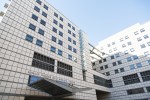Doctors at the Ronald Reagan UCLA Medical Center will be the first to test a new cleaning system for a medical device in the wake of a superbug outbreak late 2014, officials announced on Monday.
Due to insufficiently cleaned duodenoscopes, a strain of bacteria, or superbug, resulted in the death of two patients and infected several others at the center between October and January.
A specialized scope used to diagnose and treat pancreatic, bile duct and gallbladder diseases may have transmitted the superbug between patients during the outbreak. The university said the scopes had been cleaned according to the instructions the manufacturer provided.
The new cleaning system, which is not yet approved by the U.S. Food and Drug Administration, is currently on loan from the manufacturer, Langford IC Systems, and undergoing clinical trials at the UCLA medical center, said Amy Albin, a UCLA Health spokeswoman.
UCLA will use the cleaning device in addition to cleaning protocol already in place for the scopes to see if it might be helpful, Albin said.
Zachary Rubin, medical director of clinical epidemiology and infection prevention, said Langford IC Systems, which created the system, reached out to UCLA about the product after the outbreak.
“The product seemed interesting and novel, better than the manual cleaning procedures we currently have,” Rubin said. “If the results of the evaluation prove successful, UCLA might purchase the product after its approval by the FDA.”
More than 175 patients may have been exposed to the superbug and some patients infected by the contaminated scopes sued Olympus Corp., the company that produced the faulty scopes.
According to the FDA, the design of the scopes made them difficult to fully sterilize, causing bacteria to remain in them.
Langford IC Systems, a small Arizona company, is working to manufacture and bring the equipment to the market. According to the company, the scope-cleaning device is the only endoscope cleaner that does not require connectors. It works without manual assistance, whereas the UCLA hospital uses manual cleaning procedures currently.
The scope-cleaning device pushes and pulls cleaning solutions in two directions, Rubin said. The bidirectional flow of the pumps, in contrast to the unidirectional flow of the pumps used before, and the cleaning solutions better dislodge any protein particles or bacteria on the scopes, he added.
Compiled by Darakhsha Siddiqi, Bruin contributor and Alejandra Reyes-Velarde, Bruin senior staff.
